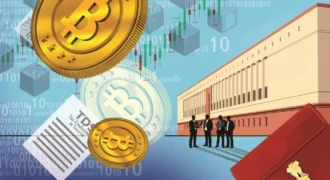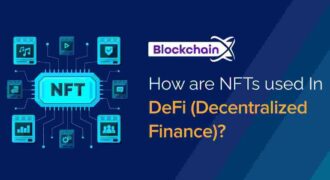The adoption of altcoins is no longer confined to speculative trading and decentralized finance. E-commerce platforms are increasingly integrating altcoins as a method of digital payment, bridging the gap between cryptocurrencies and everyday commerce. This trend is transforming how consumers shop online, how merchants receive payments, and how altcoins demonstrate real-world utility beyond financial speculation.
Understanding how altcoins are making inroads into e-commerce reveals insights into adoption patterns, merchant strategies, and future growth potential. From mainstream tokens like Ethereum and Litecoin to niche utility coins, the digital payment ecosystem is expanding rapidly.
Why Altcoins Are Gaining Traction in E-Commerce
Several factors are driving the integration of altcoins into online commerce:
- Lower Transaction Fees
Traditional payment methods, especially cross-border transactions, can be costly. Altcoins like Litecoin, Stellar, and Ripple offer fast, low-cost transactions, making them attractive for both merchants and consumers. - Faster Settlement Times
Unlike credit card payments that can take days to settle, blockchain transactions are nearly instantaneous, allowing merchants to receive funds quickly and reducing financial friction. - Global Accessibility
E-commerce platforms with international audiences benefit from altcoins, which enable cross-border transactions without relying on currency conversions or banking intermediaries. - Enhanced Security
Blockchain technology ensures secure, tamper-proof transactions, minimizing fraud risks for online merchants. - Appealing to Tech-Savvy Consumers
Younger demographics and crypto enthusiasts are more likely to spend using digital assets, giving merchants access to a new segment of high-engagement customers.
Altcoins Leading the E-Commerce Charge
Several altcoins are emerging as front-runners in e-commerce adoption:
1. Ethereum (ETH)
Ethereum’s robust smart contract ecosystem allows merchants to integrate automated payment systems, loyalty programs, and tokenized rewards. Ethereum-based stablecoins, like USDC and DAI, also provide merchants with a price-stable option, mitigating the volatility often associated with crypto payments.
2. Litecoin (LTC)
Known for its fast block times and low fees, Litecoin is gaining traction as a practical medium for everyday purchases. Platforms like Travala and Newegg accept LTC, highlighting its growing role in digital payments.
3. Stellar (XLM)
Stellar focuses on cross-border payments and remittances, making it ideal for international e-commerce platforms. Its low fees and quick transaction times appeal to merchants seeking efficient, cost-effective payment solutions.
4. Ripple (XRP)
XRP is frequently used for enterprise-level payment processing, bridging fiat and crypto ecosystems. While Ripple’s legal challenges continue, partnerships with payment providers demonstrate its potential in e-commerce and remittances.
5. Binance Coin (BNB)
BNB powers the Binance Smart Chain ecosystem and is increasingly accepted in online marketplaces, travel bookings, and digital services, often incentivized with discounts or rewards for using the token.
Real-World E-Commerce Use Cases
1. Online Retail and Marketplaces
Some e-commerce giants are beginning to accept altcoins directly for purchases. This includes tech products, apparel, gaming accessories, and digital subscriptions. Merchants integrate crypto payment gateways like BitPay or CoinPayments to simplify the checkout process for customers.
2. Travel and Hospitality
Travel platforms such as Travala and CheapAir allow booking flights and hotels with altcoins, catering to a globally distributed customer base. This demonstrates the cross-border appeal of cryptocurrencies in real-world transactions.
3. Subscription Services
Streaming platforms, cloud services, and software providers are testing crypto subscription payments, allowing users to pay recurring fees with altcoins like Ethereum or stablecoins.
4. NFTs and Digital Goods
NFT marketplaces naturally accept altcoins, as tokens like Ethereum and Solana power digital collectibles. Merchants selling digital art, game assets, or virtual real estate benefit from instant and secure payments via crypto.
5. Peer-to-Peer Commerce
Decentralized e-commerce platforms leverage altcoins to facilitate direct peer-to-peer transactions, removing intermediaries and reducing transaction costs. This model encourages community-driven commerce and trustless transactions.
Challenges in Altcoin Adoption for E-Commerce
Despite growth, several hurdles remain:
- Volatility
Price fluctuations can create uncertainty for merchants. Stablecoins are often used to mitigate this risk, but most altcoins still exhibit high volatility. - Regulatory Uncertainty
Governments are still defining the legal framework for crypto payments. Merchants must navigate tax obligations, compliance requirements, and legal risks when accepting altcoins. - Technical Integration
Implementing crypto payments requires technical infrastructure, including wallets, payment gateways, and smart contracts, which can be a barrier for smaller businesses. - Consumer Awareness
While crypto adoption is growing, mainstream consumers may be unfamiliar with altcoins, limiting widespread use. Education and simplified interfaces are key to broader adoption.
Future Trends: Altcoins and E-Commerce
The integration of altcoins in e-commerce is poised to accelerate, driven by innovation and consumer demand:
- Layer-2 Solutions and Faster Networks
Altcoins leveraging Layer-2 scaling solutions, like Ethereum’s rollups or Solana’s high-speed network, will enable near-instant, low-cost transactions, making crypto more practical for daily purchases. - Tokenized Loyalty Programs
Merchants will increasingly issue loyalty tokens or rewards on altcoin networks, incentivizing repeat purchases and strengthening brand loyalty. - Cross-Border Payment Expansion
As global e-commerce grows, altcoins will facilitate seamless international transactions, eliminating fees and currency exchange hurdles. - Integration with Web3 Platforms
E-commerce platforms may merge with Web3 ecosystems, enabling NFT-backed purchases, decentralized marketplaces, and crypto-native consumer experiences. - Stablecoins as a Bridge
While volatility remains a concern, stablecoins will likely serve as a gateway for mass adoption, allowing consumers and merchants to transact confidently without exposure to wild price swings.
Investor Takeaways
For investors, altcoin adoption in e-commerce offers indirect insights into token utility and growth potential:
- Tokens with real-world use cases are more likely to achieve long-term stability and demand.
- Partnerships with e-commerce platforms signal adoption and network utility, potentially driving price appreciation.
- Innovative payment solutions like Layer-2 scaling and loyalty tokens indicate a project’s focus on usability and sustainability.
Investors monitoring these trends can identify altcoins that not only promise speculative gains but also demonstrate genuine adoption and long-term value.
Conclusion
Altcoins in e-commerce represent the intersection of digital innovation and real-world utility. By enabling faster, cheaper, and secure transactions, altcoins are transforming how consumers shop online and how merchants conduct business globally.
As adoption grows, merchants integrating altcoins into their payment systems will enjoy greater market reach, reduced transaction costs, and access to a tech-savvy consumer base. For investors, tracking these real-world applications offers insight into which altcoins have the strongest potential for long-term relevance and growth.
Altcoins are proving that cryptocurrencies are not just a speculative asset class — they are becoming an integral part of everyday commerce, paving the way for a truly decentralized digital economy.










